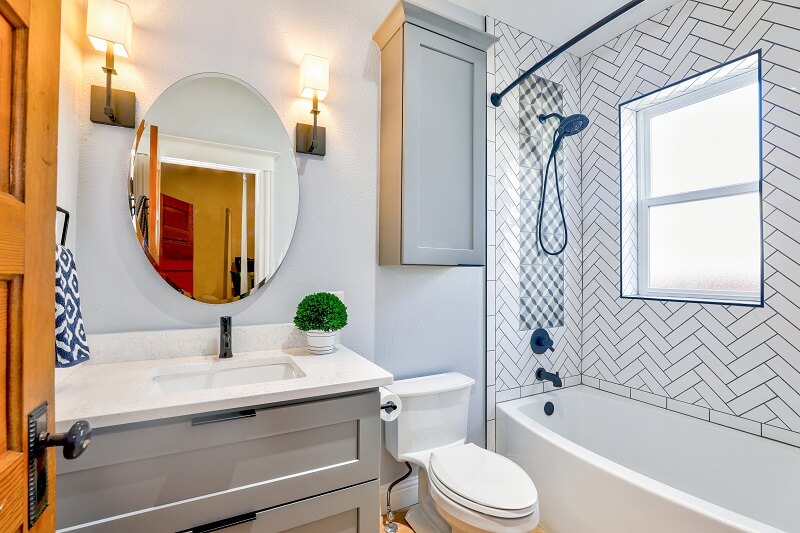Bathroom mold growth is a frequent but significant issue brought on by excessive moisture and poor ventilation. This can lead to allergies and other issues and may develop on tiles, grout, or walls as well.
Bathroom tiles, surfaces, and walls may suffer severe damage if left unchecked. Use these tips to protect the area and reduce the threats that mold growth in tile bathrooms poses.
7 Tips in Preventing Mold Growth in Tiles Bathroom
Whether they are used on the walls, floors, or counters of your bathroom, tiles have an amazing appearance. However, given that tiles can be somewhat porous, there may be issues with mold and mildew in this high-moisture space. This shouldn’t discourage you from creating the bathroom of your dreams. Here are some tips for preventing mold growth in tiles bathroom:
#7 Repair grout gaps or cracks
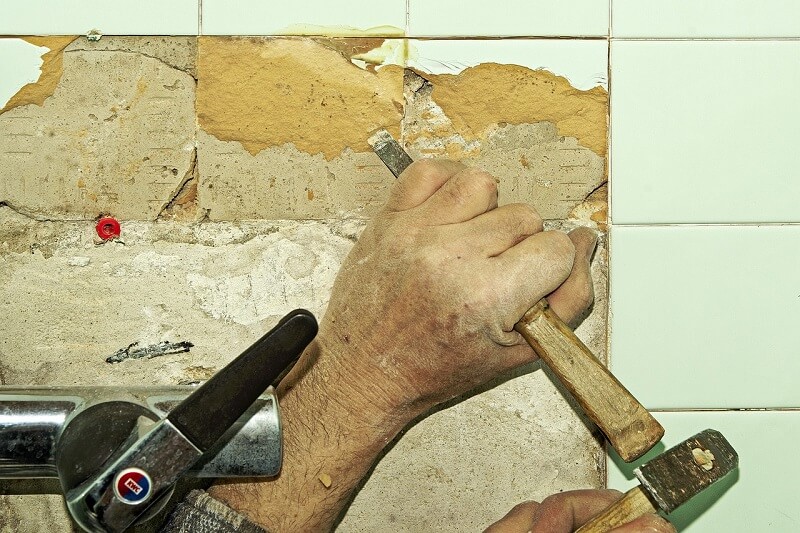
It’s important to repair any gaps or cracks in the grout between your tiles as soon as you see them. Due to the water leak under the tiles, mold and mildew may develop, which will be challenging to remove. If you see any wear or damage to your grout, call a professional to repair it.
If your bathroom has a lot of tiles, you might want to reseal the grout about once a year to stop moisture from seeping into hairline cracks. It pays to maintain the grout because cracks allow moisture to soak in and provide the ideal environment for the hidden growth of mold.
#6 Waterproof the Bathroom Tiles
To prevent water from leaking into the spaces between tiles and grout, use a waterproof sealer. Sealing the gaps between your bathroom’s tiles and grout helps stop water leaks and delays the start of mold growth.
Following the installation of the tiles, this sealer needs to be applied, and it should be checked regularly for any symptoms of wear. To guarantee maximum effectiveness, the area must be properly cleaned before any sort of sealer is applied. Choose a sealant that is compatible with the bathroom’s tiles and grout.
#5 Use Nonporous Materials in Bathrooms
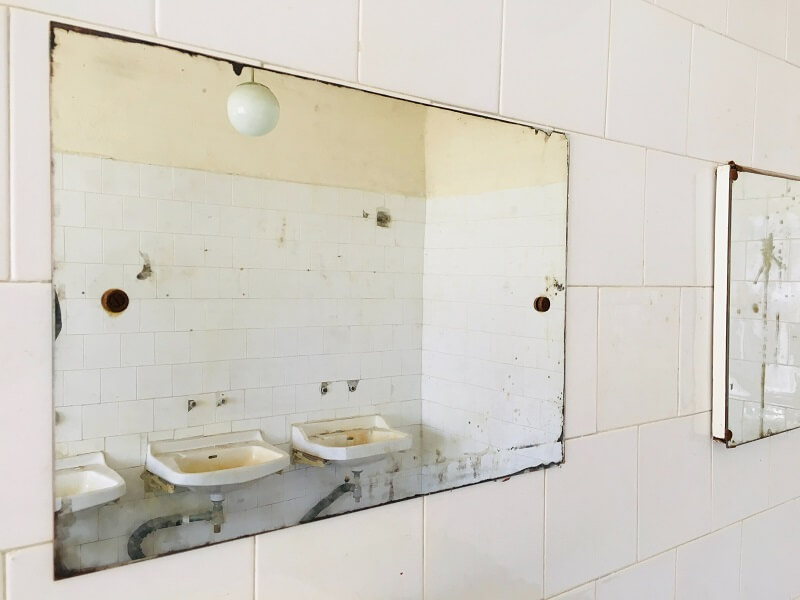
Using nonporous material is a good approach to help prevent mold in the bathroom. Mold and mildew cannot grow because nonporous materials are moisture-resistant and do not absorb water.
Ceramic tiles, glass, and stainless-steel fixtures including sinks, toilets, and curtain rods are examples of common nonporous materials. Due to their longevity and ease of upkeep, ceramic tiles are ideal for bathroom walls and floors.
Glass is a good material for windows or shower screens to let light in while limiting water splashing.
#4 Spray your Bathroom Tiles
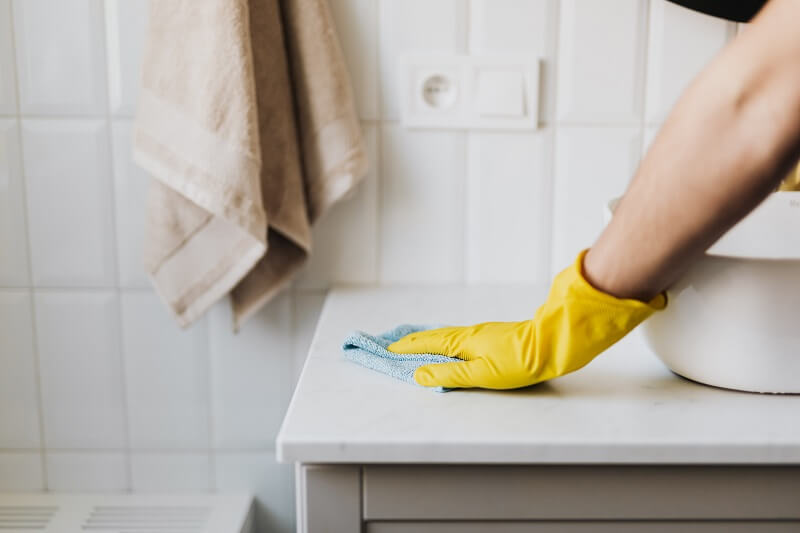
Spend a moment creating or purchasing an anti-mold remedy for your tile bathroom. Make it a practice to regularly spray down your bathroom tiles with mold-killing bathroom products after every shower. Make sure the spray is safe for the materials on your walls and floors.
Simply combine equal volumes of water and white vinegar in a spray bottle to create your remedy. Getting into the practice of spraying tiles will keep your bathroom spotless and odor-free.
#3 Remove Excess Water in the Bathroom Tiles
Your bathroom and shower are the moist areas in your house. To lessen the moisture in the area while it is not in use, there are particular actions you can take. You can use a squeegee to remove excess water from the bathroom’s walls or floor and direct it down the drain to avoid the growth of mold and mildew.
If your property suffered water damage as the outcome of leaking pipes or fixtures, this may be a sign of a more serious issue that needs to be addressed by a professional. Sometimes even more serious leak problems can be resolved with minor adjustments like tightening connections or changing gaskets.
#2 Let your Bathroom Breathe
Continuous moisture can lead to the growth of mold and mildew. Using the shower will cause your tiles to become wet, but mold can develop when the tiles are left wet especially if the moisture has seeped into the tiles. So, ensure that your bathroom has sufficient airflow.
As soon as you go into the shower, turn on any exhaust fans. If not, try finding alternative ventilation methods, such as leaving a door or window open. If you choose the latter, leave your bathroom window and door open for about 15 to 20 minutes after taking a shower. When not using the shower, keep the shower door open.
#1 Consistently Clean your Bathroom Tiles
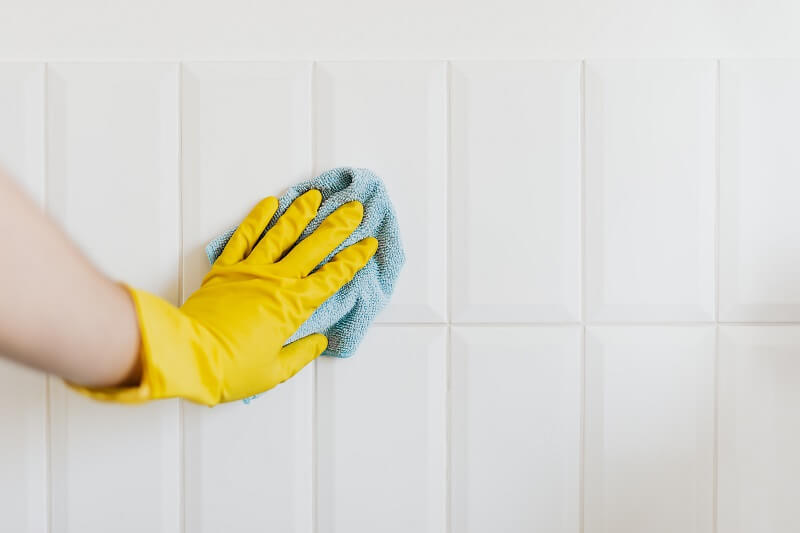
Cleaning your bathroom tiles and the grout in between them regularly is essential since leftover soap residue can also contribute to the growth of mold and mildew. Use only products made specifically for bathroom tiles or gentle cleaners on your tiles. Tiles may be damaged by harsh chemicals and acidic cleaners.
Don’t just concentrate on the shower and the tiles; spend a moment cleaning the whole bathroom as well. Replace your loofah, wash the area around the shampoo bottles, and make sure your hand towels are clean. Hang loofahs or shower pouffes to dry and replace them frequently. Clean the hamper where you place your used towels. Mold frequently hides in these kinds of areas.
Since water tends to collect beneath bar soap, creating a wet environment for mold to flourish, you might also want to switch to liquid soap. Consider purchasing a soap dish with holes underneath if you prefer using bars of soap, or use a rack.
Summary
Any home should avoid mold and mildew. A rash and headaches can be caused by mold, which can also aggravate some respiratory problems including allergies and asthma. In other words, mold exposure can cause runny nose, sore throat, and coughing in people who are prone to it. It is also harmful to animals, particularly black mold, which can make canines sick and even kill them.
The bathroom is a perfect environment for mold to grow, which is why it is so common there. If you don’t take preventive measures, most of which entail reducing moisture and humidity, mold is just waiting to grow with a regular supply of moisture from steam and water left in showers, baths, and even from the toilet.
Preventing mold growth on the grout between your bathroom tiles is quite easy, and you can typically complete it by being cautious or by using supplies you can find at home. You can also replace the grout in your shower with mold-resistant grout if you want something more long-lasting.

